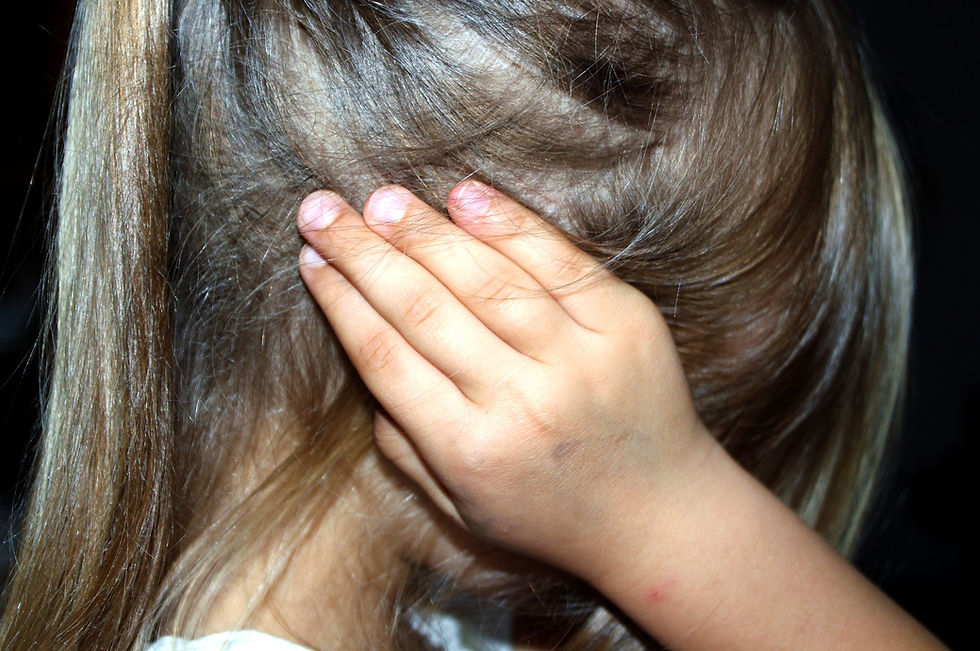“I wouldn’t want my kids around him”
- Dr. Fiona Bosly
- Feb 27, 2017
- 4 min read
Understanding issues of parenting in families where men use domestic violence.

This is a guest post on the Hear Believe Act Blog by Sister (Dr) Fiona Bosly who is a counsellor specialising in domestic and family violence from Brisbane, Australia. Her article draws on her professional experience and uses academic studies to show the links between parenting issues highlighting why external observers can mistake a mother’s concerns (about the effects on her children) for being difficult and uncooperative. We are grateful to Sister Fiona for her contribution and her generosity in helping families in need.
As a social worker, I worked in community agencies for many years, primarily working with both men and women dealing with the effects of domestic violence. During my many years in this work several commonalities, in both genders, emerged. Amongst those commonalities parenting arose as a major issue, particularly for women. Despite their distress and confusion, women generally were concerned with preserving relationships, often between the children and their father (who usually was the abuser). They spoke of their children’s fathers as a ‘good dad’ and one that ‘loves his children’. Men too, often presented as seeking to preserve relationships although they could be defensive and blaming of external factors as to why their relationships had broken down. Whilst both genders wanted to preserve aspects of their relationship the men were often more concerned with keeping their female partner engaged in their intimate relationship. Their parenting role appeared not to be an important focus for many of the men. When female partners refused to return to the relationship she was often cited as selfish and breaking up the family and bringing distress on the children. The abusive fathers appeared unable or unwilling to acknowledge the contribution of their violence to the breakup of the relationship and the effects on others, particularly their children. Within their fathering role they also seemed oblivious of their capacity to provide emotional comfort to their children’s distress, focusing instead on their own distress and their former partner’s decision to leave. Women held onto the notion of shared parenting and initially, did not recognise the detrimental effects of trying to maintain a parenting relationship with the abusive parent.
The literature too highlights this issue, that men who use domestic violence, can also use their role as fathers to control their partners and undermine her in her attempts to parent (Evans, 2007; Guterman & Lee, 2005; Harne, 2004, 2005). Further these fathers can also have idealistic perceptions about their children as a source of unconditional love, respect and compliance particularly when their adult relationships are unstable (Bancroft & Silverman, 2004; Guille, 2004; Harne, 2011; Jenks, 1996). Peled (2000, p. 33) too, outlined significant issues of parenting in men who are violent. They found these men have limited knowledge of child development, difficulty in managing their shame, limited capacity to empathise with their children’s experience of violence and struggle with committing to a non-violent parenting style. Further, Peled (2000, p. 29) cited other research that suggested that domestically violent fathers are inclined to ‘construct fatherhood in terms of ‘rights’ to children rather than nurturing them’. In addition children are seen as possessions and so men who use domestic violence were more apt to take a legal option when seeking custody of their children. Further they were more inclined to use custodial access as a means of continuing to maintain control over their partners and children. They were also less likely to pay child support or spousal support. Children were used as ‘pawns’ by domestically violent fathers to meet their needs with their former partner and to ‘sabotage’ attempts by that partner to start a new life (Peled, 2000 p. 29). Women become caught in a double bind, they want to protect their children from abuse and negotiate with the children’s father around their parenting, however that too becomes a means by which they are controlled. To resist him, to disagree with him, to stand up to him will almost certainly mean an escalation of abuse, which contributes to theirs and their children’s distress. Further the women are then often perceived as being the difficult and unco-operative party.’
In highlighting this issue, we can take steps to better educate ourselves to recognise and understand the various issues that women struggle with when leaving an abusive relationship. We can begin to learn to respond with empathy and compassion to support mothers who are seeking to negotiate on their children’s behalf. We can also learn to engage with, and hold accountable, fathers who seek to maintain control at the cost of their children’s emotional and developmental welfare.
References
Bancroft, L., & Silverman, J.G. (2004). Assessing abusers’ risks to children. In P.G. Jaffe, L.L. Baker & A.J. Cunningham (Eds.) Protecting children from domestic violence. (pp. 101-119). New York: The Guilford Press.
Evans, L.D. (2007). Battle-scars (pp. 1-60). Melbourne: Centre for Women’s Studies and Gender Research, Monash University.
Guille, L. (2004). Men who batter and their children: An integrated review. Aggression and Violent Behavior. 9, 129-163.
Guterman, N.B., & Lee, Y. (2005). The role of fathers in risk for physical child abuse and neglect: Possible pathways and unanswered questions. Child Maltreatment, 10(2), 136-149.
Harne, L. (2005). Researching violent fathers. In T. Skinner, M. Hester & E. Malos (Eds.), Researching gender violence: Feminist methodology in action (pp. 157-189). Cullompton: Willan Publishing.
Harne, L. (2011). Violent fathering and the risks to children. Bristol: The Policy Press.
Jenks, C. (1996). Childhood. London: Routledge.
Peled, E. (2000). Parenting by men who abuse women: Issues and dilemmas. British Journal of Social Work. 30(1), 25-36.
If this article raises concerns you have about domestic violence in your own life or those around you can call 1800RESPECT (If in Australia) or similar services in other countries. There is also a list of support services on this website including Christadelphian Support Services.





Comments